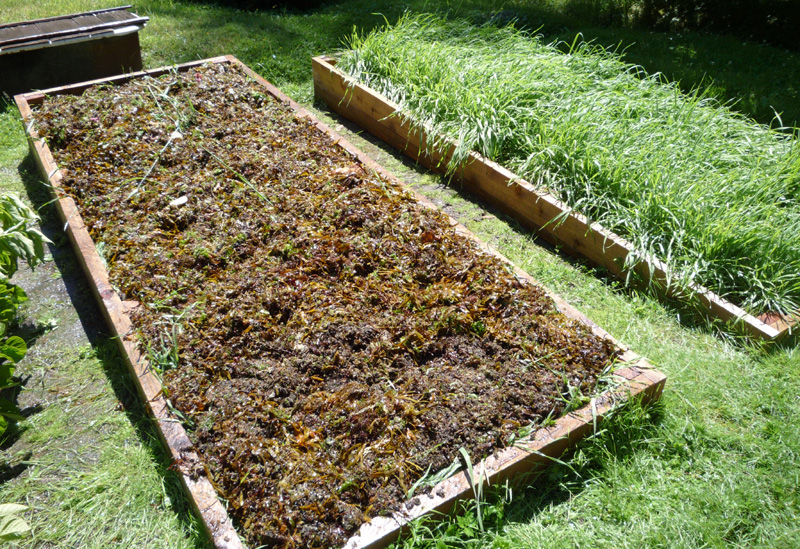Raised garden beds provide many benefits for growing vegetables, flowers, herbs and other plants. The contained soil warms faster in spring, drains better, and allows you to control the soil quality.
But proper preparation is key to getting the most out of your raised beds each growing season. Follow these tips to get your raised garden beds ready for spring planting.
In this article, we’ll cover:
- Spring maintenance for existing raised beds
- Filling and layering new raised garden beds
- Soil, amendments and fertilizers
- When and what to plant
With the right prep work, your raised beds will yield healthy, productive plants all season long. Let’s get started!
Spring Raised Bed Maintenance Tips
For existing raised beds, start the growing season off right by:
- Turning under or smothering any cover crops from the offseason to refresh the soil.
- Checking beds for damage from winter weather like detached corners or bowed walls. Make any needed repairs before planting.
- Pulling out invasive weed roots that may have encroached over winter.
- Setting up supports for vining crops like pole beans, tomatoes and peas.
- Dividing overgrown perennials and clearing old foliage.
- Topping off any settled soil and raking beds smooth and level.
- Adding 2-3 inches of fresh compost or manure and mixing thoroughly into the top 6 inches of soil.
- Covering prepared beds with plastic sheeting or 4-6 inches of mulch until planting time.
Proper maintenance keeps raised beds productive year after year.
How to Fill and Layer New Raised Garden Beds
When installing new raised garden beds, proper filling and layering results in fertile, weed-free soil:
- Step 1: Install landscape fabric along the bottom of the raised bed framing to block weeds from below. Overlap seams at least 6 inches.
- Step 2: Fill the bottom third of the bed with inexpensive bulk topsoil. This raises the main growing layer above ground.
- Step 3: Add a middle layer of high-quality potting mix or compost-enriched garden soil blend. Use at least 12-18 inches in depth.
- Step 4: Top dress with 2-3 inches of compost, manure, or dry organic granular fertilizer as needed based on soil test results. Mix into top 4-6 inches.
- Step 5: Water thoroughly to help soil settle. Then apply 3-4 inches of organic mulch like shredded bark on top.
Follow this layering approach to establish optimal growing conditions in new raised garden beds.
Choosing the Right Soil and Amendments
The soil is the foundation of a productive raised bed garden. Follow these tips:
- Test soil pH yearly and add lime if below 6.2, or sulfur if above 7.5, to reach ideal pH around 6.5-6.8.
- Mix in 1-2 inches of compost or well-rotted manure annually to replenish nutrients and organic matter.
- Add a balanced organic granular fertilizer at planting time if needed based on soil test results.
- Consider mycorrhizae fungi inoculant for boosted nutrient absorption.
- For sitting beds, add peat moss to lighten overly compacted soil.
Quality potting mixes or compost-enriched soil blends give raised beds a fertility head start. But annual care is key to maintaining soil health.
When and What to Plant in Raised Beds
Here are some tips on planting timing and crop selection:
- Wait until soil reaches 60°F before sowing seeds or transplanting. Some plants need warmer soil – around 70°F is ideal.
- Cover beds with plastic or mulch early to help warm the soil. Peek under cover periodically to check soil temp.
- Start cool-weather crops first like lettuce, kale, radishes, peas and broccoli.
- Hold off on heat-loving crops like tomatoes, peppers, squash, cucumbers and basil until soil warms further.
- Focus on just a couple main crops when first starting out rather than too many different vegetables.
- Try quick-growing salad greens and radishes for early success. Then work up to tomatoes, beans and other favorites.
Patience pays off when it comes to spring planting. Wait for proper soil warmth before sowing seeds or transplanting.
Ready to Prep Your Raised Beds?
Preparing your raised garden beds each spring may take a little work up front, but saves time and prevents problems during the growing season.
Follow this spring maintenance checklist:
- Make any needed repairs to raised beds
- Refresh soil with compost and organic fertilizer
- Remove invasive weeds and roots
- Add supports for vining plants
- Top up settled soil and smooth beds
- Cover beds to warm soil for planting
Proper preparation results in raised beds loaded with loose, fertile soil, free of weeds and ready for your plants. Then you can look forward to harvesting bountiful flowers and vegetables from your thriving raised bed garden all season long!
5 Steps to Prepare Raised Beds For Spring Planting! 🌱🌿🌱 // Garden Answer
FAQ
What do I put on the bottom of a raised garden bed?
How do you prep soil for raised beds?
How do you prepare ground under raised garden beds?
- The Ultimate Guide to Growing Strawberries in Raised Beds - August 8, 2025
- No-Dig Garden Beds: The Easiest Way to Grow a Beautiful Garden - August 6, 2025
- How to Protect and Preserve Wood for Raised Garden Beds - August 6, 2025

